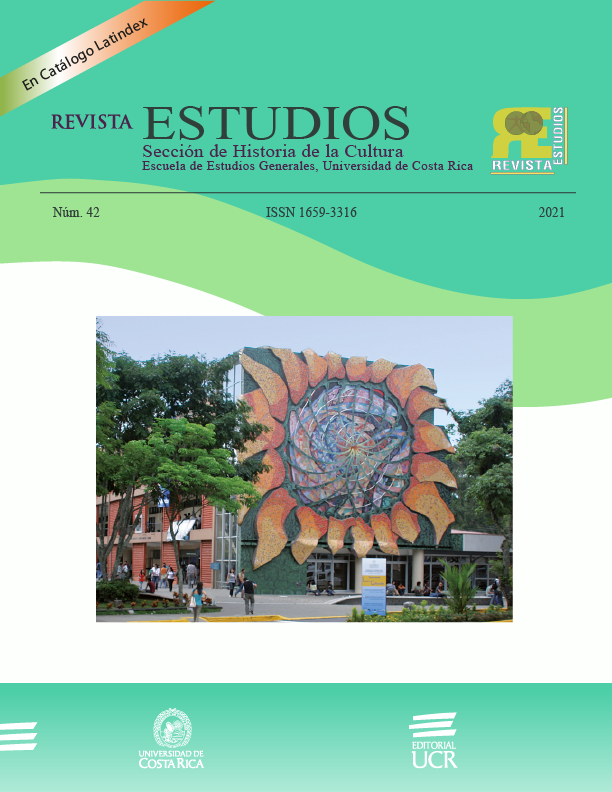Abstract
In this article we present Augmented Reality as a tool that facilitates learning, while discovering what kind of applications and educational materials can be made with this technology and how they can be used in the classroom to enhance and consolidate the language skills of our students in the area of English as a foreign language. The methodology used reinforces pupils' social skills through the exchange of ideas and collaboration, facilitates pupils' media and information literacy and during the research they develop their ability to search, select, compare and analyze information. The project presented here will give students the opportunity to put into practice the four language skills promoted in the area of English as a foreign language: listening, speaking, reading and writing. Consequently, given that all these aspects are observed and evaluated by both the students and the teacher, it can be concluded that the theoretical foundations of the project are corroborated.
References
Akçayır, M., y Akçayır, G. (2017). Advantages and challenges associated with augmented reality for education: A systematic review of the literature. Educational Research Review, 20. pp. 1-11. https://doi.org/10.1016/j.edurev.2016.11.002
Altinpulluk, H. (2019). Determining the trends of using augmented reality in education between 2006- 2016. Education and Information Technologies, 24(2), pp. 1089-1114. https://eric.ed.gov/?id=EJ1209293
Dabbagh, N., y Fake, H. (2017). College students’ perceptions of personal learning environments through the lens of digital tools, processes and spaces. NAER, Journal of New Approaches in Educational Research, 6(1), 28-36. https://doi.org/10.7821/naer.2017.1.215
Dalim, C. S. C., Sunar, M. S., Dey, A., y Billinghurst, M. (2020). Using augmented reality with speech input for non-native children’s language learning. International Journal of Human-Computer Studies, 134, 44-64. https://www.sciencedirect.com/journal/international-journal-of-human-computer-studies/vol/134/suppl/C
DECRETO 108/2014, de 4 de julio, del Consell, por el que establece el currículo y desarrolla la ordenación general de la educación primaria en la Comunitat Valenciana. [Archivo PDF]. http://www.docv.gva.es/datos/2014/07/07/pdf/2014_6347.pdf
Facer, K., Joiner, R., Stanton, D., Reid, J., Hull, R. y Kirk, D. (2004). Savannah: juegos móviles y aprendizaje. Journal of Computer Assisted Learning 20, pp. 399-409.
Ferriter, B. (2012 agosto 17). ¿Están los niños realmente motivados por la tecnología? [Entrada de blog]. http://smartblogs.com/education/2012/08/17/are-kids-really-motivated-technology
Grifantini, K. (2009, 26 de octubre). Mantenimiento más rápido con la Realidad Aumentada [Entrada en el blog]. Obtenido de https://www.technologyreview.com/s/415977/faster-maintenance- con-realidad aumentada/
Ibarra, M.S., Rodríguez, G. y Gómez, M.A. (2012). La evaluación entre iguales: beneficios y estrategias para su práctica en la universidad. Revista de Educación, 359. pp. 206-231.
Imbernon, F. (2009 May 1). Hay profesores del siglo XX, modelo escolar del XIX y alumnos del XXI. Diario de Ibiza, “Tenemos un modelo escolar del siglo XIX, profesores del siglo XX y alumnos del siglo XXI (...)”. Traducción propia. https://www.diariodeibiza.es/pitiuses-balears/2009/05/01/hay-profesores-siglo-xx-modelo-30945038.html
Lee, K. (2012). Augmented Reality in Education and Training [Archivo PDF]. Obtenido de http://www.aect.org/pdf/proceedings11/ 2011I/11_12.pdf
Liu, Y., Holden, D., y Zheng, D. (2016). Analyzing students’ language learning experience in an augmented reality mobile game: an exploration of an emergent learning environment. ProcediaSocial and Behavioral Sciences, 228(1), pp. 369-374.
Margulis, L. (2007). El Aspecto Lúdico del e-Learning: El juego en entornos virtuales de aprendizaje. RIDU, 3(1), 4.
Masmuzidin, M. Z., y Aziz, N. A. A. (2018). The current trends of augmented reality in early childhood education. The International Journal of Multimedia y Its Applications (IJMA), 10(6), 47.
Morales, P. T., y García, J. M. S. (2017). Realidad Aumentada en Educación Primaria: efectos sobre el aprendizaje. RELATEC: Revista Latinoamericana de Tecnología Educativa, 16(1), 79-92. https://paperity.org/p/80079650/realidad-aumentada-en-educacion-primaria-efectos-sobre-el-aprendizaje-augmented-reality
Moreno Martínez, N.M. y Leiva Olivencia, J.J. (2017). Experiencias formativas de uso didáctico de la realidad aumentada con alumnado del grado de educación primaria en la universidad de Málaga. Revista Edmetic, 6(1), 81-104. http://www.uco.es/ucopress/ojs/index.php/edmetic/issue/view/546
Pink D. (julio de 2009). El rompecabezas de la motivación [Archivo de vídeo]. http://www.ted.com/talks/dan_pink_on_motivation
Real Decreto 126/2014, de 28 de febrero, por el que se establece el currículo básico de la Educación Primaria. [Archivo PDF]. https://www.boe.es/boe/dias/2014/03/01/%20pdfs/BOE-A-2014-2222.pdf
Redondo, B., Cózar-Gutiérrez, R., González-Calero, J. A., y Ruiz, R. S. (2020). Integration of augmented reality in the teaching of English as a foreign language in early childhood education. Early Childhood Education Journal, 48(2), 147-155. https://doi.org/10.1007/s10643-019-00999-5
Sevilla., A. (2017). Realidad aumentada en educación. Paraninfo
Shuler, C. (2009). Bolsillos de potencial: El uso de las tecnologías móviles para promover el aprendizaje de los niños. The Joan Ganz Cooney Center at Sesame Workshop [Archivo PDF]. http://www.joanganzcooneycenter.org/wp-content/uploads/2010/03/pockets_of_potential_1_.pdf
Varguillas, C. S., y Bravo, P. C. (2020). Virtualidad como herramienta de apoyo a la presencialidad: Análisis desde la mirada estudiantil. Revista de Ciencias Sociales, 26 (1), pp. 219-232 http://creativecommons.org/licenses/by-nc-sa/3.0/deed.es_ES
Wang, M., Callaghan, V., Bernhardt, J., White, K., y Peña-Rios, A. (2018). Augmented reality in education and training: pedagogical approaches and illustrative case studies. Journal of ambient intelligence and humanized computing, 9(5), 1391-1402. https://doi.org/10.1007/s12652-017-0547-8


